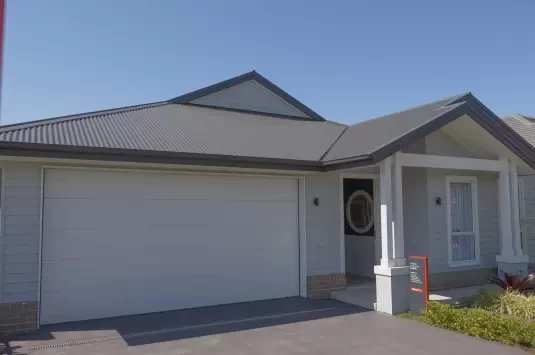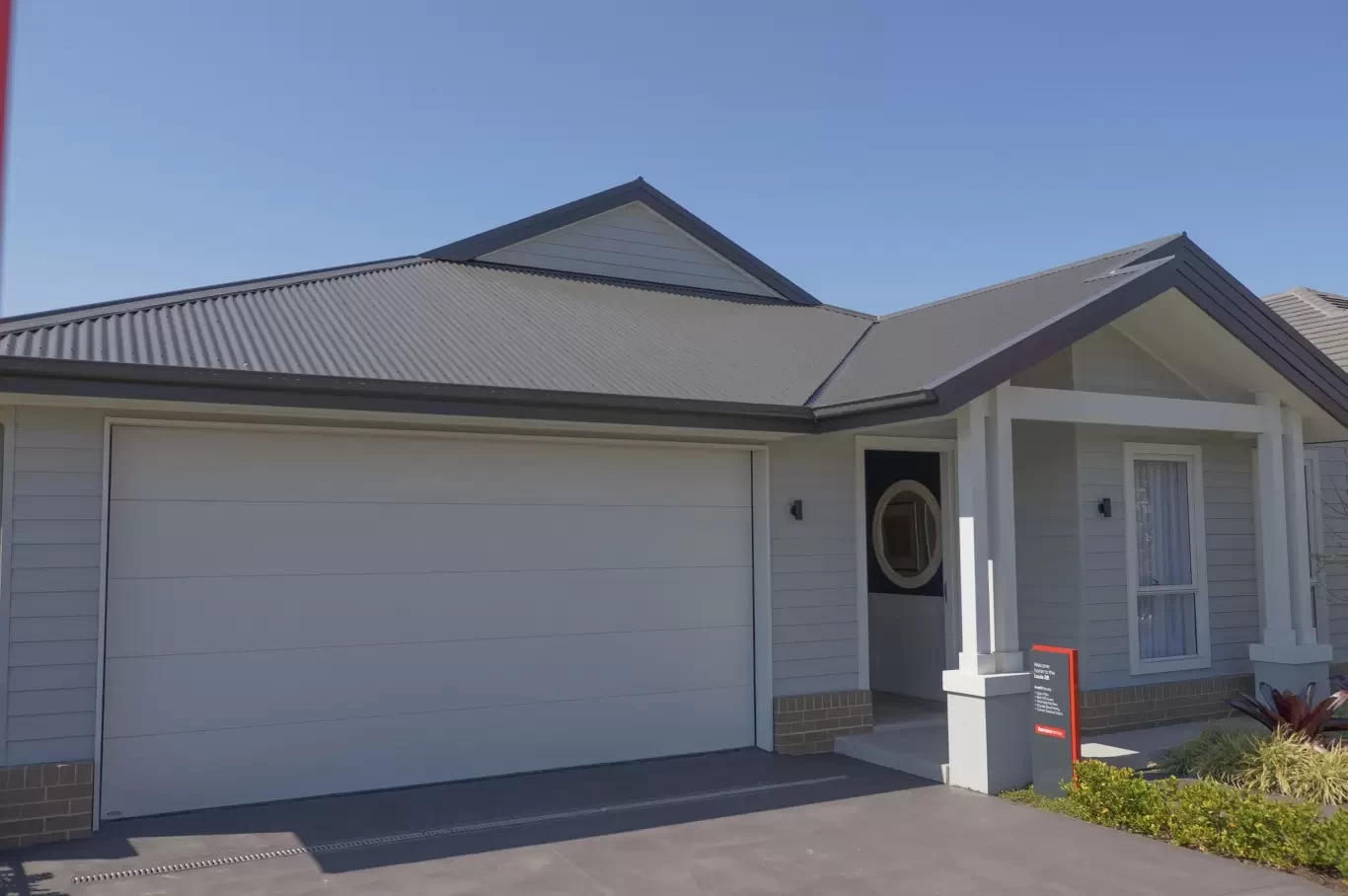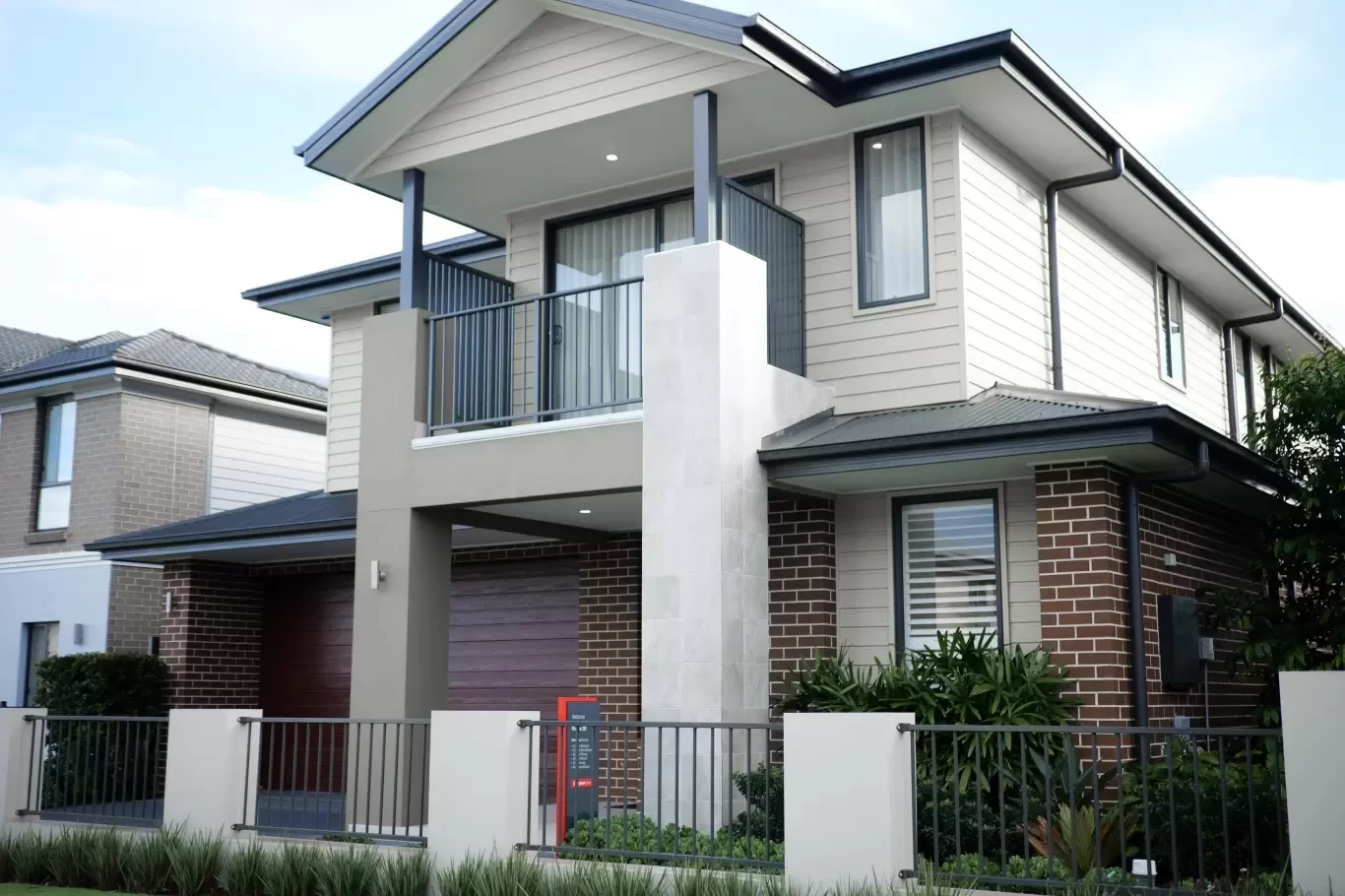You know that feeling when you discover a crack creeping across your new home’s ceiling? The builder brushes it off as normal “settling,” but your gut tells you something’s wrong. If you’re wondering: “How long does a builder have to fix building defects in NSW?” you’re not alone. The reality is, many homeowners don’t realise their rights, and builders absolutely count on this confusion.
In NSW, understanding construction defect timelines is more than just technical detail; it protects your financial interests. Misunderstanding these timelines could result in repair bills amounting to tens of thousands of dollars. Recent legislative changes in 2024, including amendments to the Home Building Act 1989 and the introduction of the Design and Building Practitioners Act 2020, have significantly impacted how defect claims are managed, reinforcing the importance of knowing your rights.
What happens if you miss the critical reporting window? Or when builders claim the defect isn’t their responsibility? The stories we’ve collected from homeowners caught in these situations are absolutely unforgettable—and not in a good way.
Here’s what you need to realise: NSW law doesn’t treat all defects equally. A hairline crack in your drywall is covered by completely different rules than serious structural foundation issues. And in some cases, you’ve got as little as 90 days to take action.
We’ve spent years helping homeowners navigate these complex situations, and let’s be clear: knowledge isn’t just power, it’s your ultimate protection. By the time you finish this guide, you’ll have expert insights into exactly how long builders have to fix different types of defects, what happens when they don’t meet their obligations, and the perfect strategy to implement when protecting your biggest investment.
Your home should be your sanctuary, not a source of stress. Let’s dive in and make sure it stays that way.
Understanding Construction Defect Liability Period in NSW
-
Builders typically have 2 to 6 years to address defects in NSW.
-
Legal timelines differ for minor vs. major issues.
-
Recent law updates might extend liability periods.
Definition and Duration
Construction defects are issues in design, workmanship, or materials in a building project. In NSW, the defect liability period, the timeframe for builders to fix these problems, varies. It's essential to define this period to maximise protection for both client and builder interests.
Typical Timeline for Addressing Construction Defects in NSW
In NSW, builders have specific statutory warranty periods under the Home Building Act 1989. Minor defects, such as cosmetic imperfections, must be addressed by the builder within two years from completion. Major defects, which significantly impact the structural integrity or safety of the building, must be rectified within six years. Clearly identifying the category of defect is crucial for timely action and protection under the law.
Legal Obligation Periods for Builders and Contractors
The legal obligation period is absolutely crucial. Builders and contractors must fix defects within the agreed timeframe. In NSW, building contracts specify these periods, usually aligning with statutory limits unless explicitly stated otherwise. Agreements may establish different timeframes based on project specifics or negotiation outcomes. Ignoring these can transform into legal actions or financial penalties.
Key Differences Between Minor and Major Defects
Minor defects include issues like paint marks or unfinished plaster. These defects typically don’t affect the function or safety of the building and usually have shorter liability periods. Other defects, which are less severe than major defects, also fall under shorter statutory warranty periods. Major defects include structural flaws that potentially endanger safety or usability. That’s why liability periods are longer, primarily due to the severity and effort required to address them properly.
Legal Framework in NSW
Understanding the legal framework is essential for both builders and property owners. The framework dictates the rules and timelines for fixing defects, impacting contractual agreements and planning strategies.
Additionally, NSW Fair Trading plays a crucial role in overseeing compliance with building standards, reviewing building contracts, and handling complaints about construction defects.
State Legislation Governing Defect Liability
The primary legislation governing construction defects in NSW is the Home Building Act 1989. This Act clearly outlines statutory warranties that builders must honour, specifically detailing a two-year warranty period for minor defects and a six-year warranty period for major defects. Builders failing to meet these obligations risk financial penalties, licensing issues, or potential legal action.
Recent Amendments Affecting Liability Timelines
Recent legislative changes in NSW, particularly amendments introduced by the Design and Building Practitioners Act 2020, have clarified builders' obligations and introduced additional protections, including a statutory duty of care. This duty of care applies retrospectively and allows homeowners to claim compensation for defects causing economic loss for up to 10 years from completion. Staying informed about these updates is essential, as they significantly impact how defect claims are approached.
Common Misunderstandings About Defect Liability Duration
You're not alone if you believe defects must always be addressed immediately. This isn't true, as liability periods vary based on specific conditions. Another common misunderstanding is that once a defect liability period ends, responsibility completely ceases. However, serious or latent defects, those not immediately visible, might still require attention, especially under the statute of limitations.
For further reading, consider "Australian Construction Law," which offers comprehensive insights on liability frameworks.
Developer Responsibilities for Defects in NSW
-
Builders in NSW must warranty their work for up to 7 years.
-
Developers need clear communication about their obligations.
-
Legal action may be necessary if defects aren’t fixed timely, often leading to building disputes.
Contractual Obligations
Developers have specific responsibilities for construction defects in New South Wales. These are outlined in standard contracts like the Australian Standards AS 4000. These contracts state that developers must correct defects within a specific period. A failure can lead to penalties, both financial and reputational. This may involve withholding final payments or even legal repercussions if defects aren’t fixed promptly.
“Under the Home Building Act 1989 (NSW), builders must provide statutory warranties covering their work. This includes a two-year warranty for minor, non-structural defects and a six-year warranty for major defects, such as structural faults or issues affecting the safety and stability of the building,” according to NSW Fair Trading. These statutory warranties apply to residential building work, ensuring that homeowners are protected from defects and other issues even after the work is completed.
Clear communication in contracts is absolutely crucial. Misunderstandings about obligations often occur when contract language lacks precision. Let’s be honest - it’s vital for contracts to establish the scope of work and response times for defect rectifications. This proactive approach can help in avoiding disputes later.
Without such clarity, commercial relationships can deteriorate quickly. Legal texts such as the “Australian Standard General Conditions” are designed to help in setting out these terms. We’ve found that consulting legal experts to interpret and craft these clauses is an important step for all parties involved.
Steps to Ensure Timely Fixes
Early Identification and Reporting of Defects
Timely defect resolution starts with early defect identification. You're going to want to be proactive in reporting issues as soon as they arise. This urgency often determines how efficiently problems are resolved. Weekly site visits, regular inspections, and open channels for reporting issues are vital to maximise effectiveness.
Technology plays a significant role here, with defect-tracking software offering a seamless approach to identifying issues quickly. McGraw Hill's report on construction technology shows that tools for managing defects increase efficiency by 20% to 30% in timelines. Thorough documentation aids in establishing accountability and creates an organised strategy for troubleshooting.
Effective Follow-up Strategies with Developers
Following up with developers requires an organised approach. Regular progress reports and meetings ensure an ongoing dialogue about existing issues. This encourages a culture of responsibility and can unlock potential for preventing conflicts. Inadequate follow-up can result in prolonged disputes, affecting all parties involved.
Here's what works best: monthly status reports that combine visual evidence with detailed descriptions of all outstanding issues. Transform your approach by diving into "The Construction Project Management Success Guide" by Andreas P for expert insights into efficient communication strategies.
Legal Avenues for Unresolved Defects
If developers or builders fail to rectify defects within the statutory warranty periods, homeowners can seek assistance from NSW Fair Trading’s dispute resolution services. If disputes cannot be resolved through mediation, legal action may be required. The Home Building Act 1989 provides clear guidance on homeowners' rights, obligations, and available remedies.
Engaging legal professionals early in the process can offer guidance on presenting a solid case.
Developers must stay on top of legislative changes. According to NSW Fair Trading, 'Recent legislative reforms in NSW, such as the Design and Building Practitioners Act 2020, have increased compliance obligations for developers and contractors, leading to greater potential liabilities, higher costs, and stricter insurance requirements.' Engaging with periodic seminars and workshops remains the best way to stay updated.
In conclusion, the responsibility lies with developers and contractors to implement robust contracts and engage promptly with identified defects. With careful planning and efficient follow-up strategies, coupled with the right legal resources, you’re well-positioned to ensure that obligations towards construction defect rectifications are met. As contract stipulations evolve, staying informed remains the key strategy for effective project management.
New Construction Warranty Duration: What You Need to Know
-
Learn about different warranty types that protect your home
-
Understand key coverage periods and their implications
-
Discover the role insurance plays in handling warranty claims
Types of Warranties Available
In the realm of new home construction, warranties serve as a crucial safety net for homeowners, offering protection and peace of mind. These warranties can be divided into two main types: structural and non-structural warranties.
Structural vs Non-Structural Warranties
Structural warranties typically cover major components of an apartment building or home. This includes the foundation, framing, and roof. These elements are crucial to the integrity and safety of a home, so issues here are often categorised as major defects. Studies show that about 25% of new homes will experience some form of structural distress within the first few years, with an average repair cost of $42,500.
Non-structural warranties can cover a broader range of issues. These include minor elements like plumbing, electrical systems, and cosmetic errors. Each type of warranty varies in scope and duration, which can directly impact how defects are addressed and when they’re resolved.
Statutory Warranty Periods and What They Entail
In NSW, statutory warranties provided under the Home Building Act 1989 are explicit: builders must correct minor (non-structural) defects within two years and major (structural or safety-related) defects within six years after completion. Separately, some builders offer additional structural warranties or insurance policies extending coverage periods, but statutory requirements remain strictly two and six years for minor and major defects respectively.
Role of Insurance in Warranty Claims
Insurance plays a pivotal role in the execution of warranty claims. It serves as a financial safety net for builders, allowing them to honour warranty commitments without absorbing the full cost directly. For homeowners, this means issues can be resolved swiftly, often with little out-of-pocket expense. Let’s be clear – familiarising yourself with how insurance affects claims can transform your experience when navigating warranty-related issues. Additionally, understanding the importance of practical completion is crucial, as the defects liability period begins after this point, ensuring builders are accountable for any defects discovered shortly thereafter.
Identifying Defects in New Homes
Common Defects Homeowners Should Be Aware Of
Homeowners should be vigilant about common defects, such as poor drainage, plumbing issues, and electrical faults. These may seem minor but can escalate if not addressed early. For instance, faulty plumbing could lead to water damage, whereas electrical problems could pose safety threats. Around 80% of structural claims involve foundation issues related to soil conditions, so pay special attention to signs of foundation problems.
Differentiating Between Minor and Major Issues
The difference between minor and major defects is more than just financial implications. Major defects affect the safety and structural integrity of the home. These can be costly and disruptive, with the average structural claim costing between $75,000 and $125,000. Minor defects, while inconvenient, are often less critical and may involve cosmetic or easily manageable faults.
Essential Tips for New Homeowners Conducting Inspections
Before closing on a new home, conducting thorough inspections is critical.
-
Engage with professional inspectors to identify potential defects.
-
Understand the distinction between what qualifies as a minor versus a major defect.
-
Maintaining a backlog of issues and their corresponding warranties aids in future claims.
Each of these steps ensures a comprehensive review and prepares homeowners for potential issues.
Understanding these aspects of warranties and defects in the context of home construction can maximise your long-term satisfaction and safety. We've covered the essentials, but remember – as the construction industry and corresponding legislations evolve, staying informed is vital to unlocking the full protection your warranties offer.
Changes in Residential Building Defect Claims Timeframe
-
Changes in construction defect claims are transforming the landscape for both builders and homeowners.
-
Claims period can now extend up to 15 years, significantly expanding builders' liability.
-
Strategic planning is essential for builders to optimise defect claims management.
1. Recent Trends and Updates
Key changes in claim regulations for 2025
Recent legislative updates have introduced significant changes for defect claims in NSW, particularly through the Design and Building Practitioners Act 2020. While statutory warranty periods remain at two and six years, this Act introduced a separate statutory duty of care. Under this duty, homeowners can pursue claims for economic loss due to defects for up to 10 years from completion. These changes do not extend statutory warranty periods but provide an additional pathway for addressing defects.
How these changes impact homeowners and builders
Homeowners now have an extended timeframe to discover potential defects, which offers them greater protection and reduces financial risks associated with late-emerging issues. For builders, however, this means increased responsibility. You'll need to maintain comprehensive records and nurture strong client relationships for years after project completion. With construction defect claims on the rise, reaching an average deficiency rate of 4% across all project types in the United States, efficiently organising your response to these situations becomes increasingly important.
Common issues in single-family homes now include problems with exterior weather barriers, structural framing, and mechanical/electrical/plumbing systems. With multifamily projects experiencing even higher defect rates of 6.5% nationally, staying vigilant is crucial. Due to recent legislation, homeowners in NSW now benefit from an extended statutory duty of care period, allowing them up to 10 years after project completion to pursue claims for economic losses resulting from defects. Builders must therefore remain diligent with documentation and quality assurance,” according to industry experts from Master Builders Association NSW.
Strategies for navigating new claim processes effectively
Given the extended liability period, let's explore how you can maximise your quality assurance measures:
-
Implement thorough inspections and utilise advanced analytics to discover and address potential defects early.
-
Organise training programmes for field supervisors and trade partners to ensure consistent, high-quality workmanship.
-
Design pre-loss prevention measures, such as access-control technology and professional safety consultants.
By embracing these strategies, you'll reduce the likelihood of costly claims while maintaining an excellent reputation in the industry.
2. Forecasting Future Changes
Potential shifts in legislation in the coming years
Looking ahead, it's important to anticipate additional legislative changes that will transform the construction industry. As consumer protection becomes increasingly prioritised, regulations around defect claims will likely continue to evolve. We've already seen mounting pressure on lawmakers to extend liability timelines, potentially resulting in new protections for homebuyers. To stay ahead, you should regularly engage with industry reports and legal advisories that provide expert insights on emerging trends.
Anticipated challenges or benefits for the construction sector
As the claims timeframe expands, the construction sector faces increased legal and financial exposure. You and your insurance partners must prepare for long-term vulnerability to potential claims. The ultimate benefit, however, is that these changes will likely drive higher construction standards, as you'll be motivated to avoid long-term liabilities by delivering perfect construction quality from the beginning.
It's crucial for you as a construction professional to embrace these changes and adapt your practices accordingly. Engaging with industry experts and consistently updating your knowledge on legislative developments will be key to your success.
Tips for staying informed about legislative updates
To efficiently track changes in construction legislation, here's how you can stay perfectly informed:
-
Discover industry workshops and seminars focused on legal and regulatory changes.
-
Subscribe to legal publications and industry newsletters for unforgettable updates on new laws and their potential impacts.
-
Build a network with legal experts who can provide timely insights and help you develop an efficient response strategy.
By planning ahead, you're not just navigating these changes—you're unleashing opportunities to transform your operational efficiency and maximise protection of your business interests.
Conclusion
Effectively navigating NSW’s construction defect resolution system requires clear understanding and timely action. Current regulations explicitly require builders to rectify minor defects within two years and major structural defects within six years from completion. These statutory warranty periods are legal obligations, not merely guidelines, ensuring homeowner protections are enforceable and clearly defined.
For homeowners, the ultimate key to success lies in prompt defect reporting and thorough documentation. Keep all communications with your builder in writing, and don't hesitate to seek professional inspections when needed. We've found that early intervention often leads to faster, more efficient resolutions.
For builders, understanding these time constraints helps maintain professional reputation and maximise your protection against costly legal battles. The construction industry transforms when defects are addressed quickly and efficiently.
The NSW framework continues to evolve, balancing consumer protection with industry growth. While the system has features that can be improved, knowing your rights and responsibilities puts you in a stronger position.
Whether you're a homeowner waiting for repairs or a builder organising defect claims, the clock is ticking. Let's not just ask "how long does a builder have to fix defects in NSW?"—but how you're going to unlock the perfect resolution within that timeframe to create an unforgettable experience for all parties involved.








